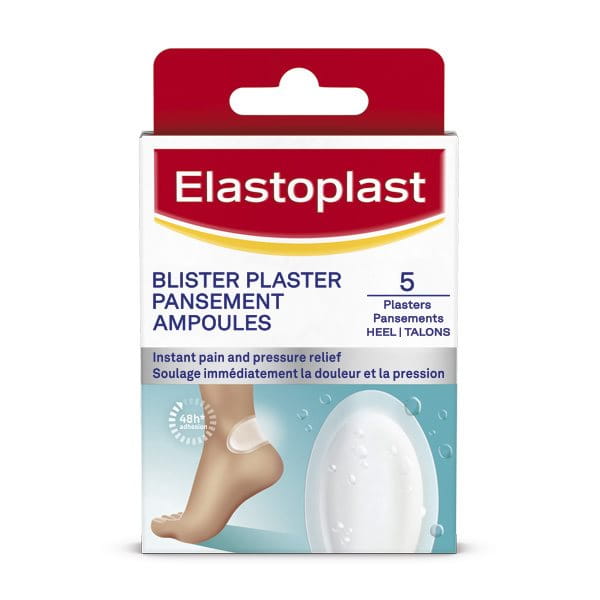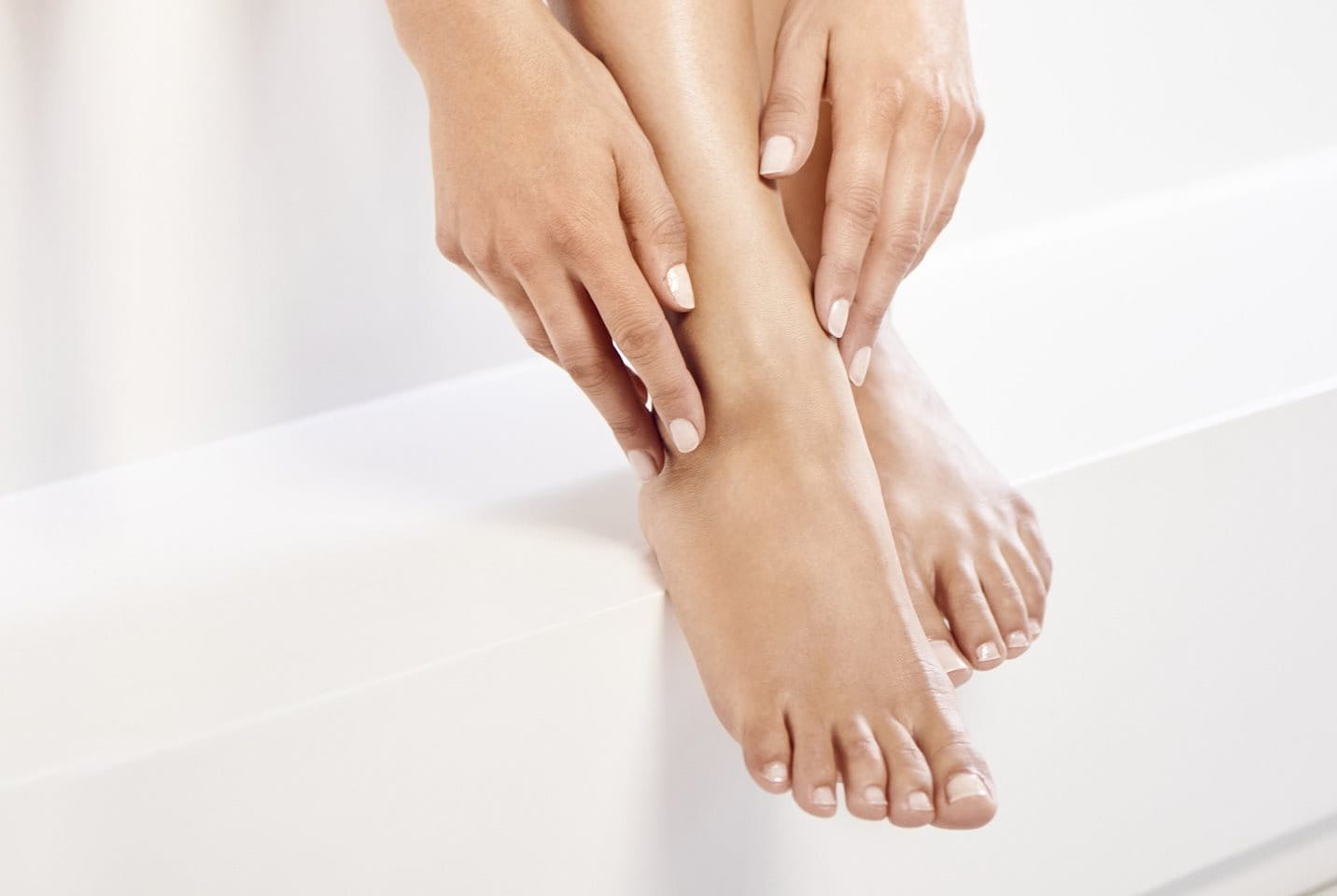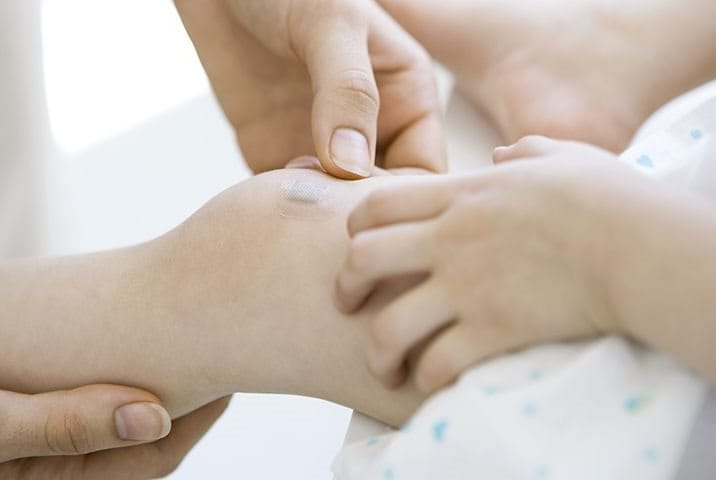Published: November 2019
Last Reviewed: November 2024
Blisters are a common occurrence for many people, especially those who are particularly active, such as athletes, as well as those who are constantly walking or are on their feet. We tell you how to treat them using the Elastoplast Blister Plaster and prevent them from reappearing.
What is a blister?
A blister is an area of raised skin with a small pocket of watery liquid inside. It can often be painful or itchy.
Although they predominately form on the hands and feet, they can appear anywhere on the body. The treatment for blisters caused by burns differs from those caused by friction. Learn more here.
How does a blister form?

Repetitive rubbing and pressure will eventually lead to the separation of the epidermis (the outer skin layer) from its lower skin layers, and this leads to the formation of a blister containing tissue fluid. This liquid cushions the wound and protect it from further pressure. The blister, then, is actually a clever self-protective measure of your body.
The blister’s outer membrane is what successfully protects the wound - from further pressure, and from dirt and bacteria infecting the body.
Signs and symptoms of an infected blister
Unfortunately, a blister is painful and can burst if exposed to more pressure and friction. This leaves an open wound that is extremely painful and can easily become infected
Signs and symptoms of an infected blister include:
- Pain
- Pus that is draining out
- Swelling and redness
- Red streak marks that are radiating outwards
- Warmth to the touch
- Fever
- Foul smell
- Peeling skin
Infection from a blister need treatment, otherwise they could lead to a blood or skin infection. Your GP may prescribe antibiotics to treat an infected blister. Learn more on how to tell if a wound is healing or infected.
Types of blisters
Blisters can be troublesome, and they come in many different forms, depending on the cause. As such, there are a few different types of blisters that can occur on the body and limbs.
Blisters on hands
Blisters on hands, commonly known as dyshidrosis eczema or pompholyx, is a skin condition that causes small and fluid-filled blisters to form on the palms, sides of the fingers and bottoms of feet. Symptoms can often present as very itchy and painful. These blisters can last a few weeks and can be a recurrent condition.
Blister plasters wouldn’t be an effective treatment for this condition, as there’s no way to prevent it from recurring. However, you can treat it by regularly washing your hands well with mild soaps and cleansers whilst keeping them moisturised at least twice a day.
Blisters on feet
Blisters can also occur on the feet and can be caused by several things. Often, friction is the main reason why blisters on the feet may occur, especially if you have poorly fitted shoes and are walking or standing for many hours in the day. When excess pressure is applied to an area of the foot, this can cause fluid-filled blisters to form.
Excessive moisture can also trigger blisters to form, common during the summer months and among athletes as tiny blisters may form due to sweat clogging pores in the feet. The Elastoplast Blister Plaster utilises superior hydrocolloid technology for highly effective blister treatment on heels, offering immediate pain relief.
Blood blisters
Like regular blisters that may form, blood blisters are also fluid-filled and raised above the skin. However, blood blisters typically contain a mixture of clear fluid and blood. These blisters form when the skin experiences friction or is pinched in a way that the blood vessels near the skin’s surface are broken while the skin remains intact.
Heat blisters
This type of blister can only occur from a burn or when your skin gets too hot as you recover from frostbite or ice burn. This can be prevented by taking precautionary steps, such as using sunscreen if you are likely to be in the sun for a long period, wearing weather- appropriate clothing to avoid frostbite, being careful when working around a fire and wearing heat-proof gloves when handling hot items.
Should you pop a blister?
The best way to deal with a blister is to leave it intact.
Blisters should not be opened because the blister roof protects against infection and deroofed blisters may take longer to heal. Learn how to care for popped blisters.
How do blister plasters work?

As soon as you can feel a blister developing, apply a plaster. Elastoplast Blister Plasters are one of the first self-help options for blister treatment. These cushion the affected area and protect even an open blister from infection and dirt. The plaster will also help relieve the pressure-induced pain and accelerate the healing process.
Hydrocolloid technology mimics the function of a scab, allowing Elastoplast Blister Plasters to create the optimal moist environment for wound healing that helps the wound to heal faster compared to remaining uncovered. They have a sticky adhesive that makes it ideal to secure onto blisters. Plasters and patches containing hydrocolloids were designed and developed to heal skin wounds such as ulcers or blisters. Learn more about hydrocolloid dressings.
Why has my blister plaster gone white?
How long do you leave blister plasters on for?
To avoid disturbing the healing process, don’t change your blister plaster unless it starts to come off by itself - Elastoplast Blister Plasters are waterproof and sweatproof so should stay in place for several days. This will give the blister time to heal in optimum, moist conditions under a plaster.
How to apply a blister plaster
Applying a blister plaster does not differ too much from applying a regular plaster to a cut or wound, however there are some steps available to guide you through the process to ensure the best healing environment:
- Ensure the area is clean and dry before applying on the blister.
- Remove the outer layer of film and press the blister plaster firmly onto the affected skin. Ensure you smooth the plaster down so there are not any pockets of air.
- Leave for a period and only change the plaster when it peels off by itself.
Some extra precautions for use include applying the blister plaster to intact blisters. For open blisters, ensure it is properly cleansed before applying plaster.
How long do blisters last?
Usually, most blisters will heal naturally after around three to seven days and can be managed at home without the need for medical attention. They can be painful whilst healing, but this should subside within 14 days at the maximum. Seek medical advice if your blister is not healing well or remains after a two-week period.
How to get blister plasters off
You should avoid removing a blister plaster unless it’s started to come off by itself. Once this has happened, make sure to remove the plaster slowly to avoid reopening the wound and undoing the healing process. Take hold of one of the detached edges and stretch the plaster out to remove, rather than pulling upwards away from the skin. You can learn more about how to remove a plaster here.
Should you put a plaster on a blister?

A clinically proven learning that the plaster is based upon is that wounds heal best in a humid environment. In a protected environment, the blister will heal gradually all by itself. Breaking the protective layer of skin of a blister allows bacteria to enter the wound, which is medically considered an open wound. Nevertheless, if this does happen, you should disinfect the punctured blister (for example with an antiseptic spray) and cover it with a blister plaster. It will protect the affected area from further pressure, friction and other harmful external influences.
The hydrocolloid material of Elastoplast blister plaster absorbs superfluous liquid from the wound and creates a protective gel cushion over it at the same time, which will keep its environment humid and thus let the wound heal quickly.
Can I use a blister plaster on a spot?
You might have seen the “beauty hack” video circulating on social media suggesting that applying small pieces of blister plaster to spots or blemishes overnight could help to reduce their appearance.
In theory, this could do the trick, as blister plasters with hydrocolloid technology are designed to draw liquid out of a wound. So, the white pus in a spot could be extracted without the need for painful squeezing. Protecting the spot with a blister plaster may also reduce the chance of infection.
However, a blister plaster is not a guaranteed method of treatment on every type of acne, and is not effective at healing blackheads, whiteheads or cystic acne. Those with sensitive skin may also want to avoid using plasters and patches containing hydrocolloid as an active ingredient, as the adhesive can irritate the skin. Speak to a dermatologist for further advice.
How to prevent blisters
If you're prone to suffering from blisters, read our tips on blister prevention:
- Wear comfortable shoes that fit correctly, especially if you know that you’ll be walking a lot or on your feet for a long time. The right choice of shoes can help prevent future pain, and shoes are usually the reason behind the formation of blisters. Remember to gradually break in new shoes before you wear them on a big shopping tour or sightseeing trip.
- Wear better socks, such as non-cotton ones that wick away moisture. Consider doubling up on socks prior to any blister-inducing activities. This allows one layer to soak up moisture while the other provides extra padding.
- Consider using shoe insoles, as these provide extra padding and reduce friction when active.
- Wear protective gloves when handling equipment such as tools for gardening, as well as when handling chemicals, detergents, cleaning products and solvents.
- Use sunscreen to prevent burns from the sun turning into blisters.
- Apply a foot cream regularly for basic foot care. This will make the skin on your feet more supple and hydrated and therefore more resistant to developing blisters.
- Humidity and leather are not a good mix: keep your feet as dry as possible. Wet shoes, boots and socks will cause blisters far quicker than dry ones.
- When working out or running, wear special socks that are enforced on toes or heels and don‘t have seams.
- Cover up areas that are prone to blisters for an extra layer of protection.
- When going on city trips or for longer walks, be prepared by taking an Elastoplast Blister Plaster with you in your bag. This is conveniently equipped with a case to ensure that your five large plasters do not get lost on your adventures.
- Add talcum powder to your shoes and socks to help absorb moisture.
- Consider keeping calluses instead of removing them, as they help to remove your feet.
Please note that none of the above tips are a substitute for professional medical advice. Consult a health expert if our tips do not help, or if you have (or suspect that you have) a medical condition.
For further information about Elastoplast products, please contact us at consumer.relations.uk@beiersdorf.com
Please read the instructions for use given in our product packaging with care.







